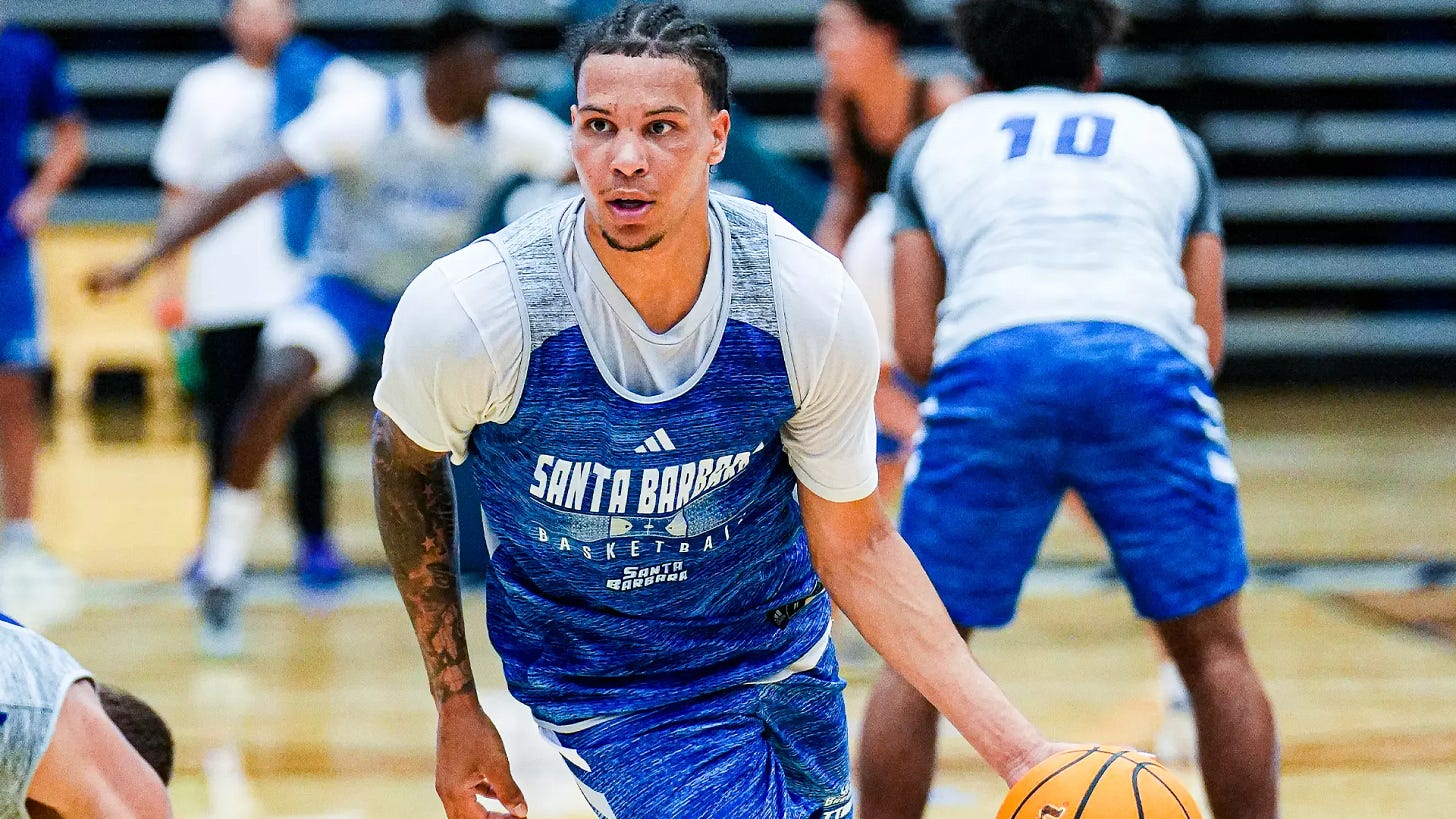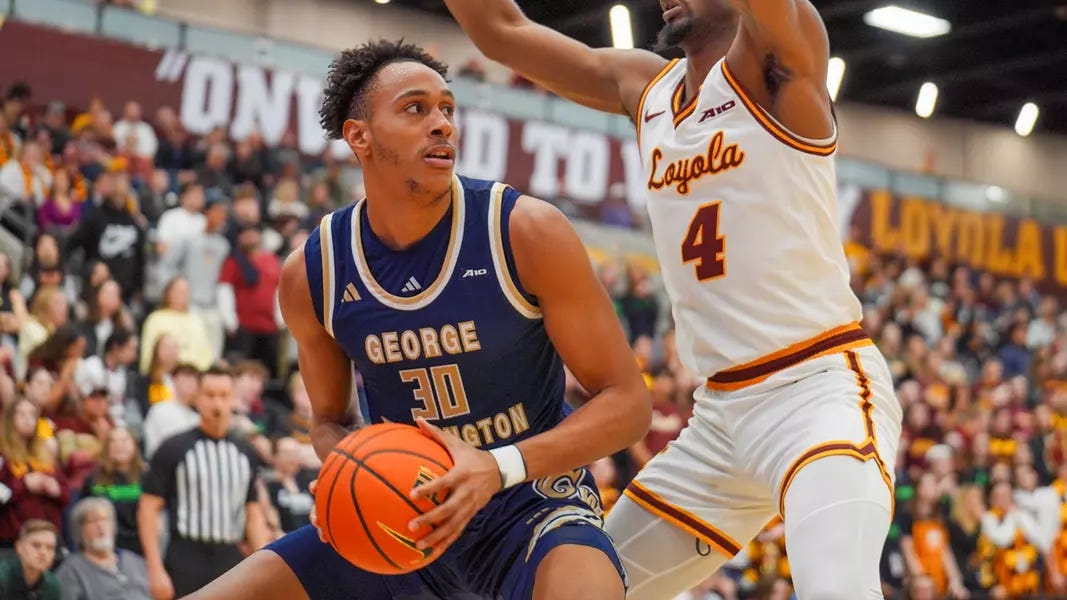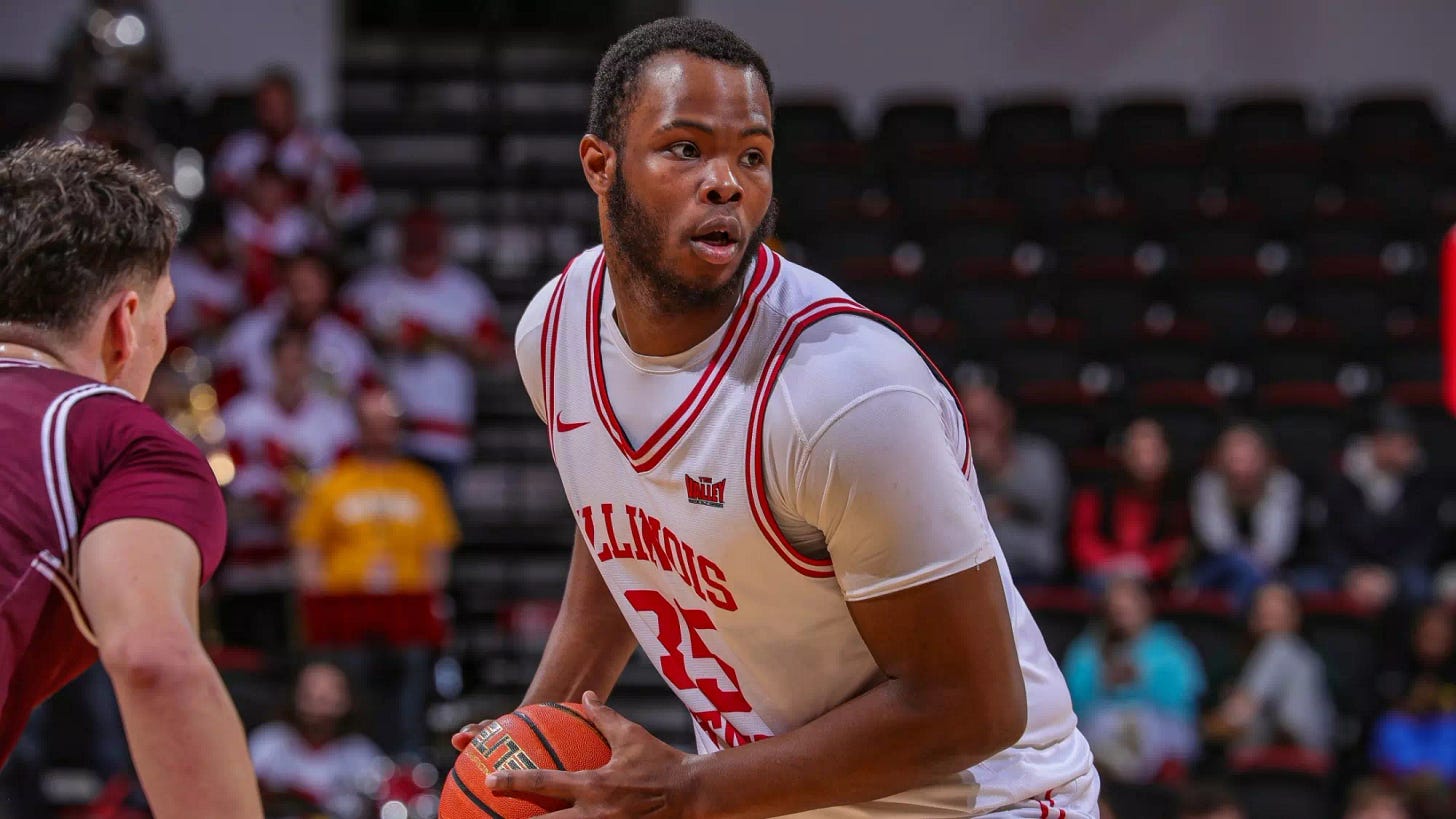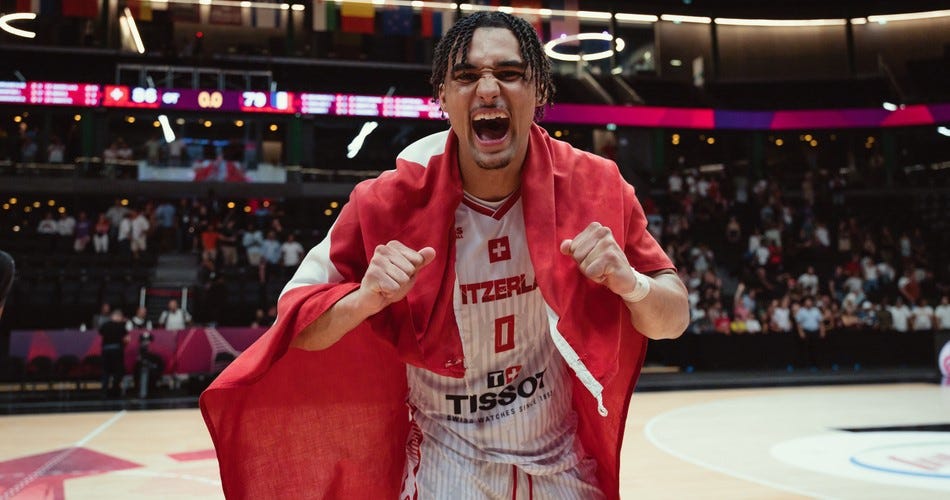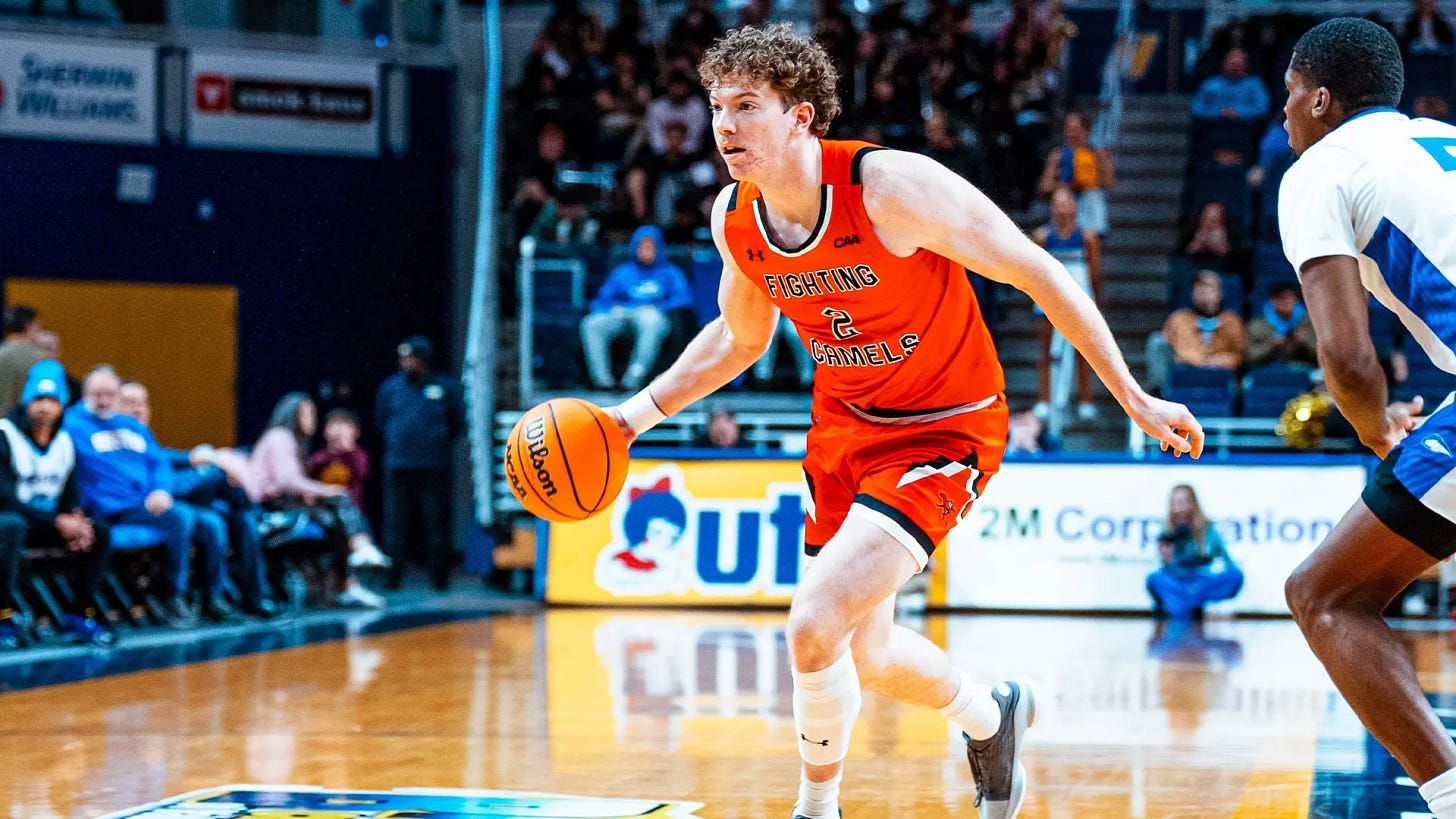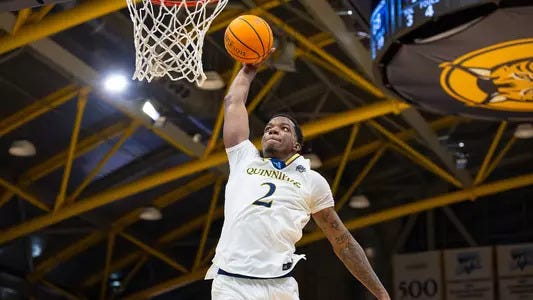Hidden NBA Gems: Non-Power Conference Players to Track
Discover six non-power conference basketball stars with NBA upside. Detailed analysis of prospects from UCSB, George Washington, Illinois State, and more.
The transfer portal, addition of adding professional players from the international ranks, and now even the G-League has completely changed the landscape of college basketball. Teams outside of the non-power conferences have the ability to even find a hidden gem from another country, land a player seeking opportunity from a higher conference, or securing a high-ranked high school player looking to play in year one.
As we are just a week away from the college basketball season, I’m teaming up with Ethan Alexander of Hoops Sicko to dive into six players outside the power conference ranks that have the potential of reaching the NBA. Let’s get started!
Use the code “BracketBusters” when checking out at Crow’s Nest Coffee Roasters to receive 20% of your order! Want two bags of coffee shipped to your door every month? Sign up for a monthly subscription here and receive 25% off your monthly subscription!
Miro Little – UC Santa Barbara
6’3” 195lbs - Point Guard – Junior
Ethan Alexander:
I’m excited to see Miro Little spread his wings with UCSB this season. The former top 50 recruit has spent two seasons playing in the Big 12, one for Baylor and one for Utah. During those years, he saw very little real opportunity to be his team’s lead guard, which led him to struggle to find his footing as both a scorer and passer. However, I’ve been a big fan of his game since high school, and his international career with Finland has been more than enticing. I still have faith that he could emerge as an elite pass-first point guard at the college level, and now that he’s with the Gauchos, he should have more than enough opportunity to do just that.
Little’s career with Baylor isn’t really worth noting, as he played only 7.1 minutes per game for the Bears. However, I do think it’s important to understand why he struggled last season with the Utes if we want to understand what his path to being an NBA prospect could look like. While he did have trouble finding consistency as a scorer with Utah, he did lead the team in assists with only 2.9 per game. The Utes didn’t run a system that required a pass-first lead guard, instead running offense through dynamic scoring guard Gabe Madsen and their big men. Because of this, Little’s style of play forced the team to totally change their objectives when he was on the court, forcing him into a bench role when he was brought to the program to be a starter. Now, he joins a program that will likely allow him to play his pass-first style.
Little is a dynamic passer with an intriguing scoring arsenal at the one. At 6’3” and 195lbs, he’s a bit bigger than most pass-first lead guards, allowing for a more diverse scoring toolbelt than expected. He’s an excellent offensive processor, prodding into the mid-range and paint to collapse the defense before making decisions. When his outside shot is falling, he’s able to draw defenders beyond the arc, a position where he finds a ton of success both as a scorer and passer. Even when his scoring falters, his defense and positional rebounding bring enough value to warrant keeping him on the court. He’s a solid point-of-attack defender and a very smart defensive playmaker, and he grabbed 3.2 rebounds per game last year despite playing limited minutes off the bench.
It’s difficult to evaluate Little based on what we’ve seen so far, but I’m of the belief that if he can put everything together, he could become a very enticing prospect. For me, everything hinges on his scoring coming together for an entire season. He hasn’t proved to be a consistent scorer from any individual level, despite showing significant flashes from all three. I’m not concerned about his passing, defense, or rebounding, but he has major questions to answer regarding his scoring. If he can answer those questions this season, he could emerge as one of the top players from a Big West conference that has found major success over the past few seasons.
Rafael Castro - George Washington
6’11” 220lbs - Center - Senior
Elliott Crow:
Rafael Castro is one of the best big men in the country among the college basketball ranks. Last season, he averaged 14 points, 8.9 rebounds, 1.8 assists, 1.4 blocks, and 1.2 steals per game while shooting 66% from the floor. Looking at his key metrics:
125.8 offensive rating (82nd)
65.8% effective field goal percentage (13th)
66.1% true shooting percentage (22nd)
12.7% offensive rebounding percentage (80th)
21.6% defensive rebounding percentage (143rd)
5.1% blocking percentage (181st)
2.5% steal percentage
He’s a traditional center, but we’ve seen the trend of these styles of players returning to the NBA. With Zach Edey and Ryan Kalkbrenner being two players that immediately come to mind over the last two seasons. However, he is light years quicker on his feet than those two comparisons. Plus, he can actually distribute the ball a little bit as well. He finished with a 13.8 assist rate, which for a 6’11 center is impressive. We were able to watch his basketball IQ blossom before our eyes last season and he continuously improve as each month went on.
Castro is a remarkable athlete. He can slam home dunks, he never gives us on the glass, and he is stout defensively. He’s not a three point threat at all, but he doesn’t have to be. He’s one of the most efficient scorers inside the paint, in which he can use his length and speed to his advantage. Then on the defensive end, he uses those same traits to lock down the paint and block a large amount of shots and disrupt the lanes to create turnovers that can turn into fast break opportunities.
The only con I’ll highlight at this point is, Castro is pretty thin. When he gets to the next level, he is going to have to put some more muscle on to be able to fight against some of the big men in the NBA. However, I fully believe that his skills are impressive enough to overcome his smaller frame. For example, I’ve highlighted that he is quick on his feet, which allows him to maneuver the paint and pivot quickly. That’s going to allow him to carve up other bigs that can’t change direction quickly enough. He has an opportunity to turn what some would say is a con into leverage to make himself more valuable inside the paint.
I’ll end on this. People are going to make comments that he had to transfer down from Providence to George Washington to produce, but that’s not how I see it. He needed an opportunity and not only did he get one, he also blew past expectations. If he can take another step forward this season, or even just mirror what he did last year, and I fully believe that he will be an NBA player.
Chase Walker – Illinois State
6’9” 280lbs – Power Forward/Center - Junior
Ethan Alexander:
Illinois State’s Chase Walker will be one of the most dominant players in the nation this year, likely leading the MVC favorite Redbirds to an NCAA tournament berth in the process. The hefty back-down artist is coming off a sophomore season when he emerged as one of the top big men in all of mid-major basketball, and now he’s looking to cement himself as one of the top frontcourt players in the country.
Following a year when he posted averages of 15.2 points per game, 6.2 rebounds, 2 assists, .7 steals, and .4 blocks on shooting splits of 58% from the field, 35.7% from beyond the arc (on limited attempts), and 69.3% from the charity stripe, his decision to remain with the Redbirds was admittedly surprising. One would assume he was a hot commodity for high major programs looking to get multiple seasons from an elite big man. Instead, he decided to return to the program who took a chance on the once unranked high school recruit from Columbus, Ohio. Now, he’s the biggest name (and player) for one of the most highly touted mid-major teams in the country, and I fully expect him to take another leap, post some of the best stats in the country, and emerge as a potential NBA prospect.
When he has the ball in his hands, Walker almost exclusively operates under and around the rim. He spends the majority of each possession operating away from the ball, setting screens and flowing through actions before finding strong court position and being set up inside by his teammates. At that point, it’s usually too late for his opponents. Once he has the ball in the paint, he utilizes elite footwork and body control to further improve his position before overpowering his matchup with his impressive strength. Despite being a couple inches undersized for his position, his weight and strength more than makes up for this physical disadvantage. Even then, he’s not some sort of dynamic vertical athlete who regularly throws down emphatic dunks. Instead, he relies on elite interior touch to convert layups, floaters, and push shots.
The rest of Walker’s game is rather uninteresting, as he’s an average interior defender and a slightly below average rebounder. However, the one ancillary skill that stood out to me during his sophomore season was his passing. He showed flashes of being a legitimate offensive hub, finding teammates on cuts and around screens for efficient looks both inside and out. If he could further develop this skill, he could make up for his lack of a real outside shot, artificially extending his game beyond the arc via his passing. This is what I’m looking for from an NBA perspective, as I think the only way he becomes a viable NBA prospect is for him to adopt that multi-layered offensive skillset. If he does this while dominating the MVC how he’s expected to, I think he could make the NBA leap following this season. Either that, he transfers to a powerhouse program, or he stays with Illinois State for what could be one of the best seasons we’ve seen from a mid-major player in a very long time.
Want to support my writing, but don’t want to sign up for a monthly subscription? Consider “buying me a coffee” via the link below!
Sign up for Bracket Busters’ Discord to discuss all things Mid-Major Basketball!
Dayan Nessah - Cleveland State
6’7” 218lbs - Forward/Wing - Sophomore
Elliott Crow:
You probably haven’t heard of Dayan Nessah yet, but fans of teams outside of the traditional power conferences will be learning his name quickly this season. Nessah spent his freshman season with the George Washington Revolutionaries where he averaged 2.7 points and 1.5 rebounds while shooting 52.4% overall and 50% from beyond the arc. These aren’t eye popping, but lets dive into what really caught my attention this year.
Nessah participated in the FIBA U19 World Cup this year as a member of team Switzerland. He absolutely dominated on the court. Through seven games, he averaged 17.7 points, 9.3 rebounds, 3.4 assists, and 1.4 steals per game. He finished with four double-doubles, and his best game came against their stunning victory over France as he had 22 points, 15 rebounds, 5 assists, and 2 steals.
He is incredibly crafty on offense. He isn’t afraid to fight through contact to get to the rim, he can stop on a dime and knock down a mid-range shot, and he is a strong three-point shooter as he finished in the FIBA U19 World Cup shooting 51.9% from outside. He’s a monster on the boards as he rebounds as if he is a center at 6’7. He has some work to do on his free throw shooting, but I’m not too concerned with that. He does have a natural ability to create offense for himself, which allows him to get to the line at a high rate so he needs to improve there.
I do want to see him become more efficient from inside the arc. He’s a prolific athlete and scorer, but he shot just 41.9% from inside on nearly nine attempts per game. That’s not bad by any means, but he was the go-to guy on Switzerland. When he heads to Cleveland State this year, he isn’t going to be averaging nearly 13 shots per game, so I want to see him play more tight.
Cleveland State is entering a new era with head coach Rob Summers and he has found himself a potential future NBA player. Dayan Nessah should have a huge opportunity this season to secure a starting role on a rebuilding team, where he’ll most likely be able to increase his stock to hop to a power conference school within a year or two.
I actually had pieced together some highlights, which you can watch below:
Colby Duggan – Charleston
6’7” 225lbs – Forward/Wing - Junior
Ethan Alexander:
Now, for two years in a row, the Campbell Fighting Camels have produced players who looked like potential NBA role players. Anthony Dell’Orso was first, who shot over 40% from three with Arizona last season and who looks to take a leap this year. Now it’s Colby Duggan, who will be playing his junior season with Charleston after a very successful sophomore campaign with the Camels. He made a major leap between his first and second seasons with Campbell, posting averages of 15.7 points per game, 3.3 rebounds, 1.3 assists, .5 steals, and .3 blocks on splits of 46.1% from the field, 34% from three-point territory, and 72.6% from the charity stripe this past season. Now he joins one of the better mid-major rosters in the country at Charleston, and I fully expect him to help lead them to the NCAA tournament, where I think they could make major waves.
Duggan has an incredibly unique game, yet one that I think could translate to higher levels of the sport if utilized properly. Despite having the sturdy build of a traditional forward, he plays more like a wing, offering long-range catch-and-shoot value and creating a ton of downhill offense from the mid-range. In fact, he was one of the best mid-range shooters in the nation this past year, being nearly automatic on pull-up and turnaround jumpers from that range. He’s capable of finding offense with and without the ball and is in constant flow within the offense on every possession. He’s a strong screener and connective passer who works away from the ball to disrupt the defense before getting the ball and going to work. Defensively, he offers a strong frame and above average mobility, allowing him to defend two-through-four, a skill that further bolsters his already impressive two-way versatility.
I do have a few questions regarding his game, most of which concern his positional value and fluidity. For example, he’s a rather poor rebounder for a four, but not horrible for a three. On the other hand, his 34% from beyond the arc looks a bit worse if you consider him a wing instead of a forward. His decision making also has room to grow, as he maintained a negative assist-to-turnover ratio throughout his sophomore season. One must also wonder if his mid-range reliant game will translate against bigger and better defenders, even though he is fantastic as both a shot creator and shot maker from that level. If his mid-range shooting falters, will his inside-out scoring be enough to shoulder the offensive weight that will likely be thrust upon him at Charleston? He must answer all these questions before I’ll feel comfortable considering him a real NBA prospect.
Luckily for us, Charleston will have the CAA’s spotlight this season and will likely be expected to compete on the national stage. Duggan isn’t the only marquee transfer the program brought in this offseason, with most spectators likely tuning in to watch SC Upstate transfer Mister Dean. This is to say that all his weaknesses (and strengths) should be on full display despite him not playing for a power program, which should allow him to put his name on NBA Draft radars if he does meet expectations. Personally, I’m excited to see what he’s capable of, and I’m hoping to see a leap from him coincide with a big year from the Cougars.
Amarri Monroe - Quinnipiac
6’7” 220lbs - Wing/Forward - Senior
Elliott Crow:
It’s probably not too often that you think about the MAAC and potential NBA players, or the fact that a potential NBA player passed on hundreds of thousands if not millions of dollars to stay at Quinnipiac. Amarri Monroe is not only a special player, but one who’s loyalty has led him to spend his senior season with the Bobcats.
Monroe averaged 18.1 points, 9.1 rebounds, 1.6 assists, and 2.3 steals per game last season while shooting 40.5% overall and 27.3% from beyond the arc. It’s hard to believe, but his sophomore season he shot even better. In the 2023-2024 season, he finished shooting 47.3% overall and 35.1% from beyond the arc. However, he was taking just 9.2 shots per game while that jumped to 15.2 per game last year. He’s metrics are elite:
23.8% defensive rebounding percentage (59th)
3.8% steal percentage (56th)
7.7% offesnive rebounding percentage (464th)
4.6 fouls drawn per 40 minutes (348th)
83% free throw percentage (213th)
While his offensive efficiency did drop from 111 from the year prior to 102.3, it’s still a respectable figure. In fact, the year prior he even finished with a 3.6% blocking percentage which dipped to 2.6% this season. It’s important to keep in mind that the efficiency dropped as his role changed. During his sophomore season the Bobcats had Savion Lewis and Matt Balanc who is now dominating overseas in Denmark. With in particular Balanc gone, Monroe stepped up as the go-to guy. It’s easy to imagine that had the Bobcats had more offensive pieces outside of Paul Otieno, his underlying metrics who more closely mirror that sophomore season.
Monroe is elite on offense, simple as that. He has a tremendous shooting ability which allows him to step outside and knock down a three, stop in the mid-range and hit a 15-17 foot shot, or use his athleticism to throw it down at the rim. On the defensive end, he has a solid wingspan which allows him to rack up the steals and turn those turnovers into points on the other end. He’s also a menace on the glass. At 6’7, he rebounds as if he was a seven foot center which is emphasized by that long reach and strong athleticism.
The largest concern I have is, what can he do against tougher talent. I personally love the MAAC, but the conference was 25th last season per KenPom with four sub-300 KenPom teams. For example, against St. John’s he finished with juts four points while shooting 0-9. Against Saint Louis, he finished with four points on 2-11 shooting. Against Yale, 23 points, but just 9-22 shooting and 1-9 from deep. The season prior, he finished with eight points against Florida even with an overall better roster around him. I’m not trying to diminish what he has done, but you do have to take into account the level of talent he is playing against. However, the raw talent and skillset is there to make him an intriguing option at the NBA level. I don’t foresee him being a late round pick unlike some others on this list, but he’s the type of player that could sneakily end up on a two-way contract or spend a year or two on a G-League roster to develop more.



